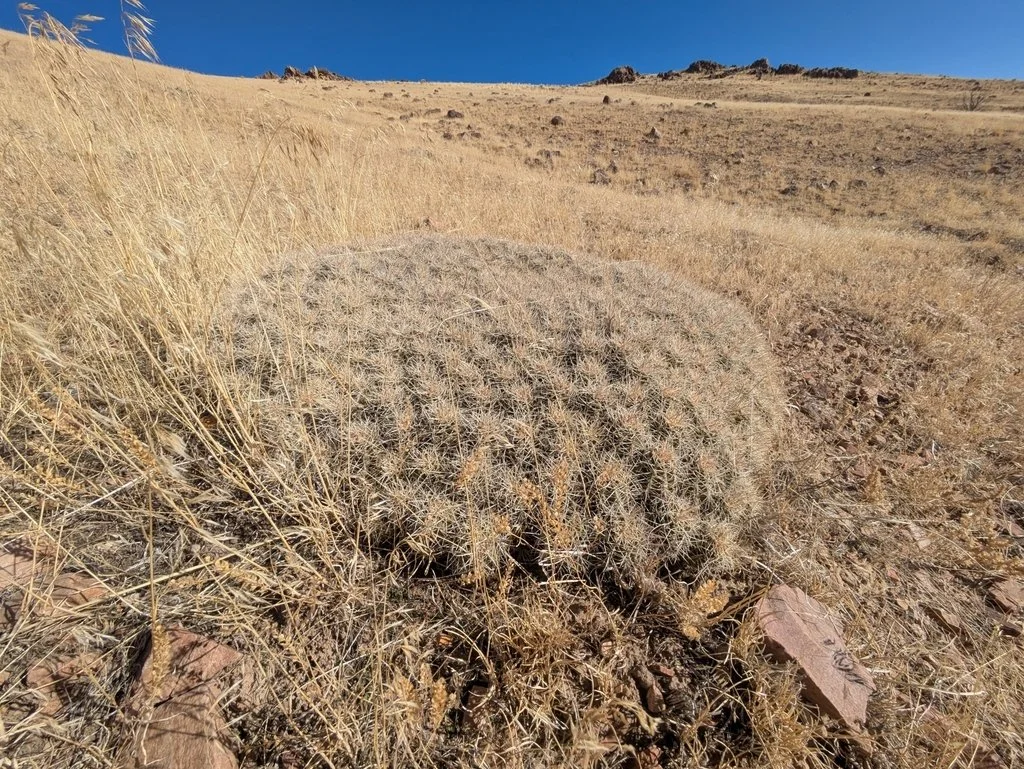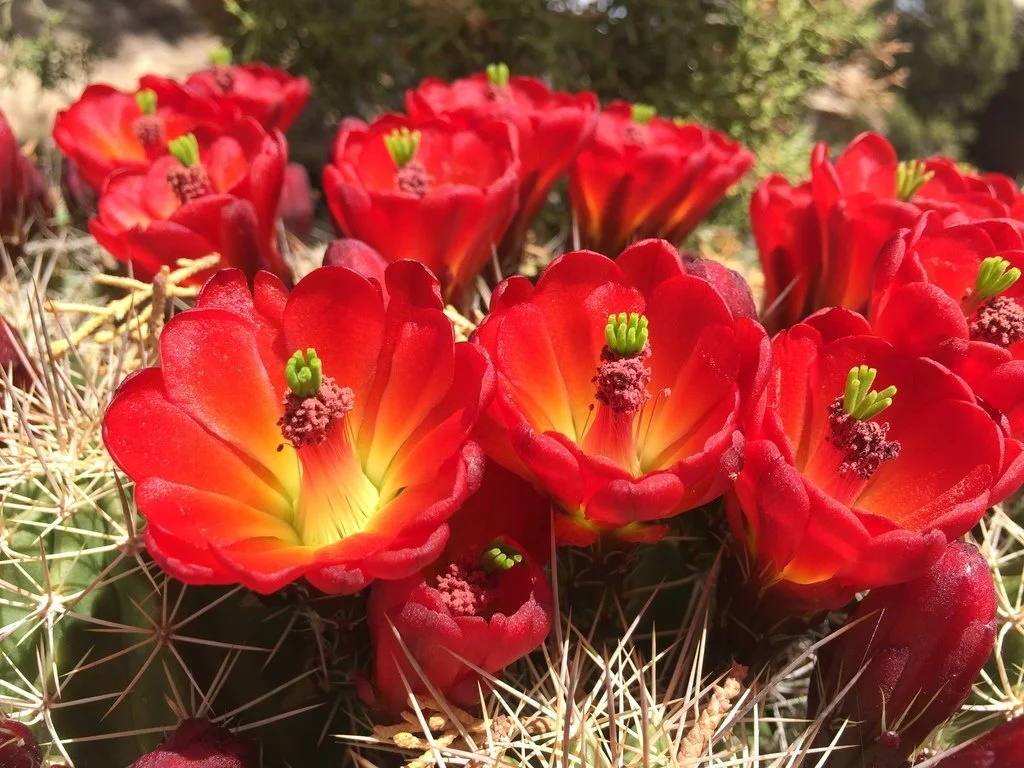Kingcup Cactus
Echinocereus triglochidiatus
A number of varieties of this highly variable cactus species are known, but not all are universally recognized. Either way this is one of the most attractive hedgehog cacti. This species grows in clumps as much as 3-4 feet across but usually smaller. The bright red-orange flowers often cover the whole plant, which is cylindrical and low-growing, often hugging up against some larger plant. The numerous flowers grow at the top of the stems, all about the same height, giving a full view of all the flowers at one glance. They last for several days. The flowers vary slightly in color as a result of soil type or genetic differences. The flowers are bright scarlet red to orange-red tepals. A thick nectar chamber and many thready pink stamens are at the center of the corolla. The fruits are spherical to obovate, slightly pink or reddish, and lose their thorns over time.
Grow in full sun to bright shade. Plants in filtered or morning sun look the best. Provide excellent drainage. Low water needed though watering plants that are in the ground 2-3 times a month in summer keeps them looking their best. Container plants water 1-2 times a week in summer. Water once or twice a month in winter in containers, and maybe once or twice the whole winter for plants in the ground. Hardy to about 20°F though some populations are hardy to far colder temperatures, even well-below zero °F.
Photo by Cecelia Alexander, iNaturalist
Echinocereus triglochidiatus on SEINET
Although it is favored by hummingbirds for pollination, its flowers are not specialized for hummingbird pollination, and it is pollinated by bees as well.
Seeds are dispersed from the fruits of mature plants. While ants occasionally take fruit to their mounds, leaving seeds above to sprout - feeding by rodents and lagomorphs are the most common means of dispersal. New sprouts of the cactus thrive under the shade of the fourwing saltbush, which provides protection from animals and desiccation. New growth of E. triglochidiatus is clustered around very old specimens, atop the remains of the saltbushes that served as a nursery. Rodents occasionally kill the plants by digging nests underneath, destroying roots.
Water can be extracted in emergencies. The pulp is made into cakes and candy, the fruit eaten fresh, as jam.
Echinocereus is from the Greek echinos, hedgehog or spine and cereus, waxy, while triglochidiatus means with three glochids. There are 89 species of Echinocereus native to the southern United States and Mexico in very sunny, rocky places. Usually the flowers are large and the fruit edible.
All the varieties of the E. triglochidiatus can be found in the Southwestern United States. It lives in various upland, mountain, and dessert climates throughout Arizona, New Mexico, Colorado, California, Texas and Northern Mexico at elevations between 150 to 3500 meters.




